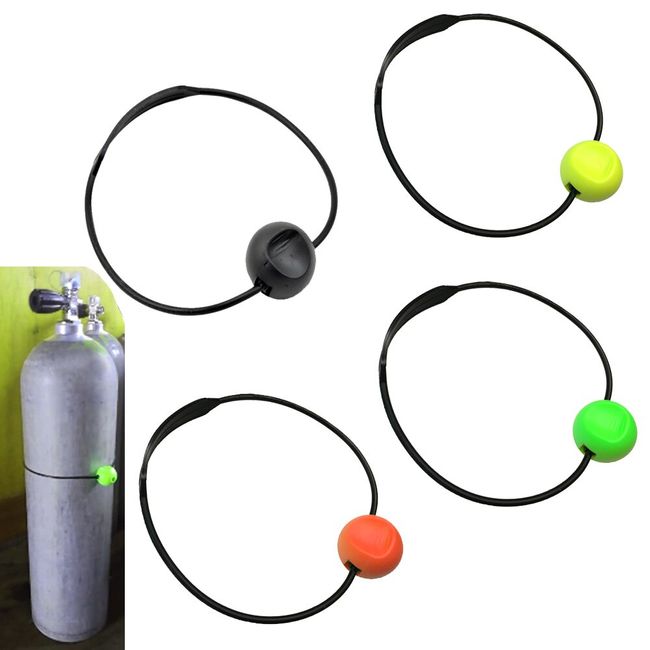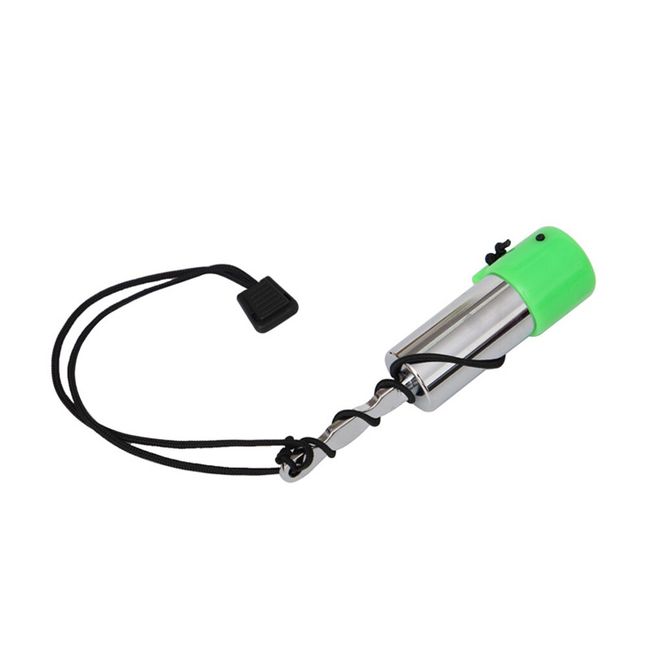Noise Makers: Which one is right for you
Posted by Dive Professional: William Taylor on on 4th Nov 2023
Beneath the waves, scuba divers have found the need to create noise, not to disturb the serene underwater environment, but to ensure safety, communicate, and sometimes, to deter wildlife. The types of noise makers utilized in scuba diving are as varied as their purposes, and each comes with its own set of advantages and disadvantages. This article explores these devices and offers insight into the preferences within the diving community.
Types of Scuba Noise Makers
1. Tank Bangers
The simplest form of noise maker is the tank banger, which consists of a stretchable band that fits around a diver’s tank with a hard object attached to it. When a diver needs to get the attention of their buddy, they stretch the band and release it, causing the object to hit the tank and create a noise.
Advantages:
- Simplicity: They are easy to use and require no special training.
- Cost-effective: Tank bangers are generally inexpensive.
- Reliability: With no moving parts or need for batteries, they rarely fail.
Disadvantages:
- Range: The sound of a tank banger doesn’t carry far, especially in conditions with ambient noise.
- Disturbance: It can be disruptive to marine life and other divers if overused.

2. Underwater Horns
These devices attach to a diver’s buoyancy compensator (BC) and use a small amount of air from the tank to produce a loud sound. They are often used in emergency situations.
Advantages:
- Loudness: They can be heard over relatively long distances underwater.
- Emergencies: Their distinct sound can signal distress effectively.
Disadvantages:
- Air Consumption: They use air from your tank, which could be a problem if air supply is low.
- Malfunction: If not maintained properly, they can fail due to the complexity of their design.
3. Rattles and Shakers
These metal tubes contain a ball bearing or similar object that makes noise when shaken. They are held in the hand and can be used to get a buddy’s attention.
Advantages:
- Control: They make noise only when the diver chooses to shake them.
- Versatility: They can be used to attract attention from marine life as well as other divers.
Disadvantages:
- Limited Range: Like tank bangers, their sound doesn’t carry very far.
- Dexterity: Requires the diver to have a free hand to operate, which is not always possible.

4. Electronic Devices These high-tech solutions can emit sounds or even use ultrasonic waves to communicate with other divers or devices.
Advantages:
- Range: Can offer long-range communication options.
- Clarity: Some electronic devices can emit clear and distinct signals that are easily recognizable.
Disadvantages:
- Cost: They can be expensive to purchase and maintain.
- Complexity: May require training to use effectively and could fail mechanically.
5. Surface Noise Makers While not used underwater, these are designed to signal boats and rescuers from the surface, like whistles and air horns.
Advantages:
- Alert: They provide an effective means of signaling for help when on the surface.
- Compliance: Many diving locations require divers to carry a whistle for safety.
Disadvantages:
- Functionality: Only useful at the surface and not for underwater communication.
Community Preferences and Practices
The scuba community is diverse and preferences for noise makers can vary greatly depending on the type of diving and the individual’s needs. In recreational diving, the emphasis is often on simplicity and reliability, which makes tank bangers and rattles popular choices. Their ease of use and low cost make them accessible to most divers, and they are often seen as sufficient for the task of getting a buddy’s attention.
Technical divers, who engage in more complex dives, often prefer electronic devices due to their range and the clear signals they can provide. However, the cost and the potential for failure make some hesitant to rely on them entirely. Many technical divers will carry a simple tank banger or rattle as a backup.
When it comes to signaling from the surface, almost all divers agree that having a whistle or surface air horn is essential. This is a safety standard in many diving courses and is mandated in some regions.
Advantages and Disadvantages in Context
The advantages and disadvantages of each type of noise maker should be considered in the context of the dive. For example, the limited range of a tank banger is less of an issue in clear, calm waters where divers are unlikely to stray far from each other. In contrast, during a wreck dive with poor visibility or strong currents, the long-range capabilities of an underwater horn or electronic device could be lifesaving.
It’s also important to consider the environment. Noise pollution can stress marine life, so devices that create less disturbance, like rattles that are only used when necessary, are preferable in sensitive ecosystems.
Conclusion
In conclusion, the "right" noise maker for a scuba diver depends on various factors: the nature of the dive, personal preference, cost considerations, and the local ecosystem. Divers must weigh the pros and cons of each option and often, carry more than one type of noise maker to be prepared for different scenarios.
As for community preferences, they are as diverse as the underwater environments we explore. Yet, despite the variety of available choices, the underlying current within the diving community is the commitment to safety and respect for the ocean. Noise makers are tools—not toys—and their responsible use is a testament to the scuba community’s dedication to preserving the underwater world we all cherish.


